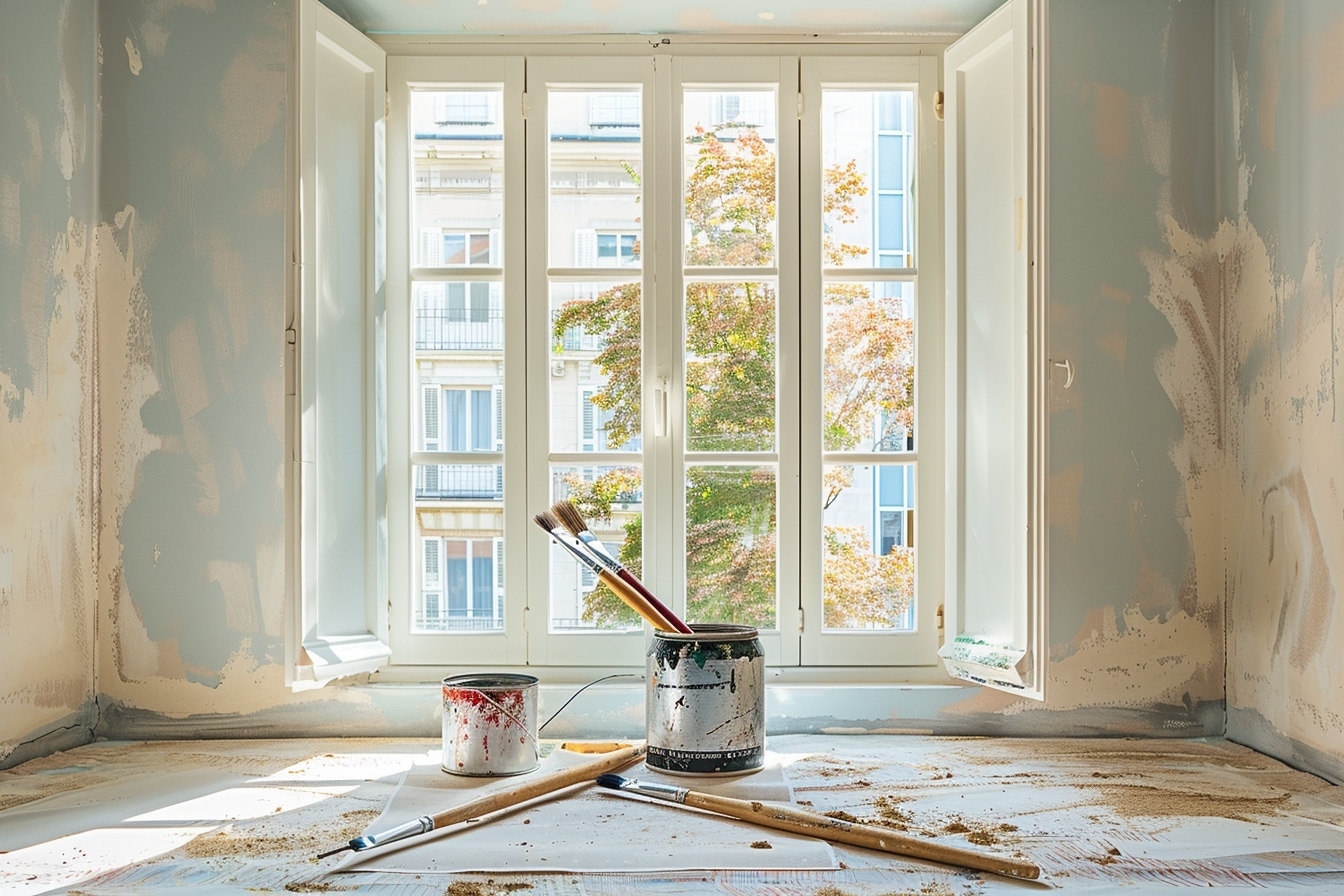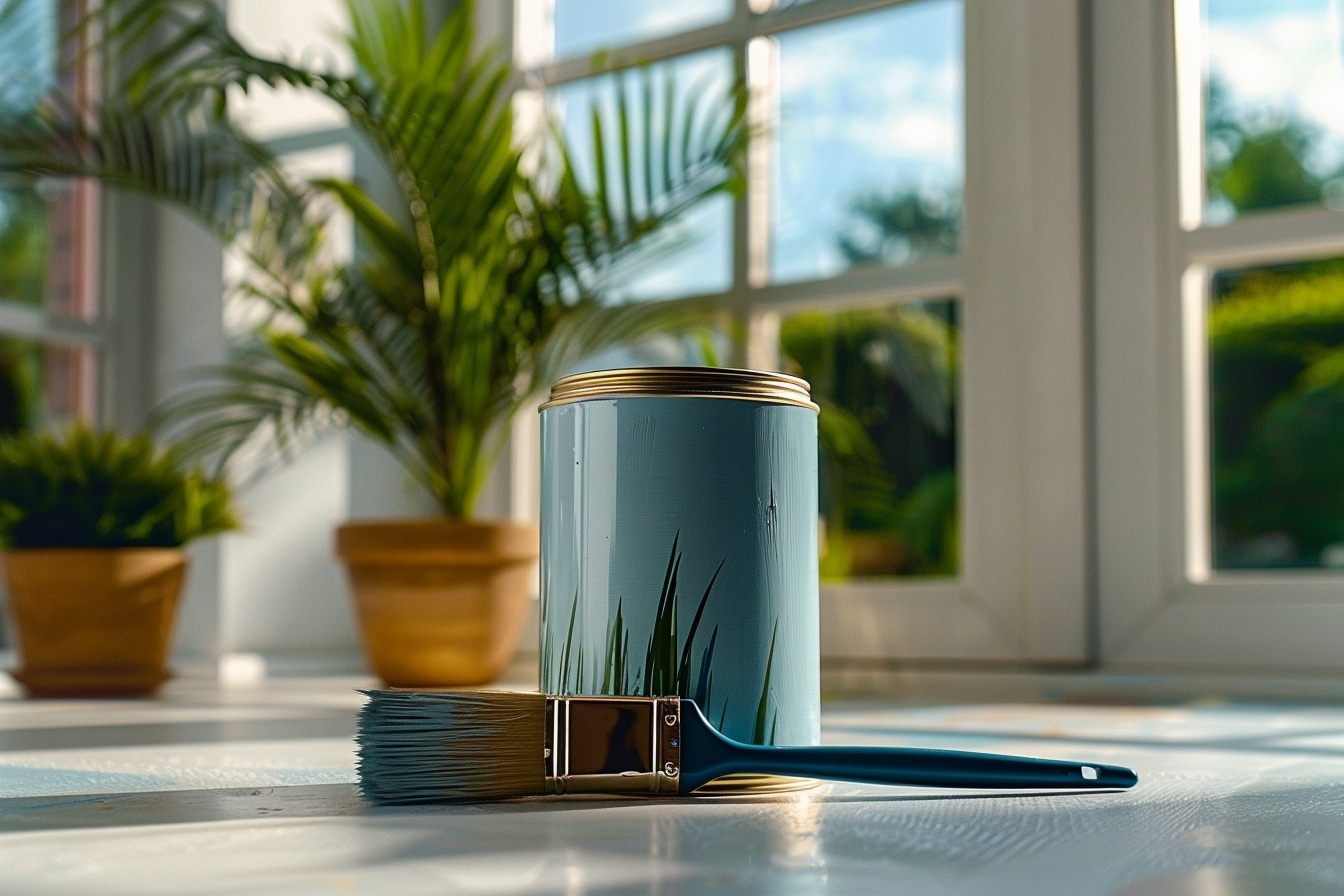Outsmarting Paint Fumes: Effective Ways to Slash Their Duration & Elimination Tactics

When you give your interior a facelift by painting it, enthusiasm can quickly be tempered by the lingering smell of paint. Not only can this smell be unpleasant, it can also raise concerns about the comfort and health of the indoor environment. Let’s take a look at how long this odor lasts and, more importantly, how it can be effectively eliminated.
How long does paint smell last?

The persistence of paint odors depends on a number of factors. The type of paint used, drying conditions, room ventilation and the painted surface play a crucial role in how long the fumes last.Water-based paints, such as acrylics or latex, are generally less odorous and their fumes fade more quickly, often within a few days. Oil-based paints, on the other hand, are notorious for their strong odor, and may continue to emit fumes for several weeks. Temperature and humidity also affect drying time, and therefore the duration of odor. A well-ventilated room maintained at a stable temperature will see paint odors evaporate more quickly than a closed, damp space.
Paint odour elimination strategies

Ensure good ventilation
Without a doubt, ventilation is essential to accelerate odor dissipation. Opening windows, depending on the weather, lets fresh air in and stale air out. To increase ventilation efficiency, using fans to direct air outwards can be a worthwhile strategy.
Use natural odour absorbers
Natural solutions exist to reduce the smell of paint: baking soda is a natural deodorizer and can be placed in cups around the painted room. Activated charcoal is also an effective option, thanks to its great capacity to filter impurities from the air, including the volatile organic compounds released by paint.
Indoor plants
Certain plants have depurative properties and can help purify the air. Ivy, for example, is known to absorb formaldehyde, one of the volatile components present in many types of paint.
Choose assisted aeration methods
Devices such as air purifiers equipped with HEPA or activated carbon filters can be highly effective in eliminating odors and airborne particles. They work actively to filter the air and reduce the presence of pollutants.
Harnessing the effectiveness of essential oils
Essential oils not only mask odors, they can also act as neutralizing agents. When diffused, they contribute to a more pleasant atmosphere. Lavender, lemon and mint are particularly appreciated for their refreshing properties and their ability to eliminate paint odours.
Prevention rather than cure
It’s a good idea to think about preventing the appearance of strong odors when choosing paint. Opting for environmentally-friendly paints, with little or no volatile organic compounds (VOCs), is beneficial for indoor air quality. These environmentally-friendly paints also minimize health risks.
Applying paint correctly
Careful application according to the manufacturer’s recommendations not only optimizes drying, but also reduces harmful emissions. Avoiding over-application can also significantly limit the intensity and duration of odours.
Choosing the right time to paint
Scheduling painting work at times when it’s possible to ventilate freely, such as spring or autumn, helps avoid odour concentration. Similarly, avoiding painting when humidity is too high can prevent prolonged drying and odor persistence.
Patience is key

In addition to all the techniques and tips for speeding up the process, patience is sometimes the best ally. Gradual odor reduction is a natural process, and giving paint the time it needs to dry and stabilize is often unavoidable. It’s also wise to remember that, over time, paint odors always fade. Firstly, our senses get used to it, and secondly, the compounds responsible for the smell disperse and decompose as the paint hardens.
The bottom line on paint odour removal
Tracking down the smell of fresh paint in our interiors may seem tedious, but with the right methods and a little discernment, we can speed up the process considerably. From proper ventilation to the use of natural or technological solutions, each strategy has its part to play in restoring a healthy, pleasantly scented indoor environment. Whether you prefer ecological solutions or more modern means, it’s essential to adapt the approach, taking into account the specific features of the space being treated and the type of paint being used. Finally, choosing low-VOC paints from the outset can significantly reduce the need to deal with persistent odours and contribute to a healthier home for all its occupants.
Comments
Leave a comment